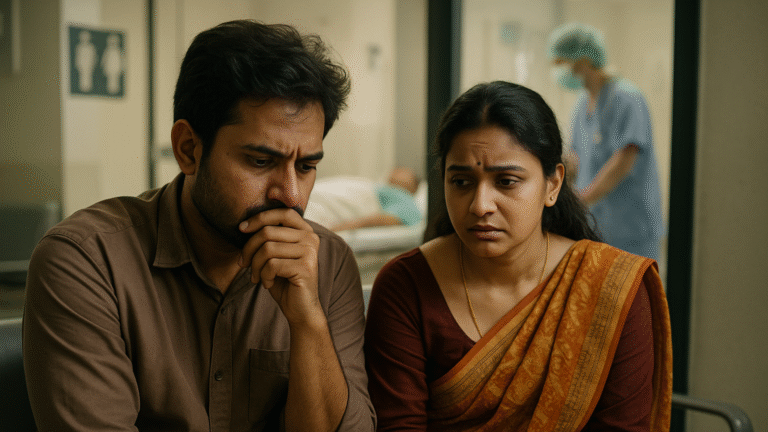Chai, Paan, and Budget Leaks: How ₹20 a Day Destroys ₹20,000 a Year

The Daily Ritual That Costs More Than You Think
You know the routine, don’t you? That first hot cup of chai to kickstart your day. A quick biscuit or a pack of chips to munch on at work. One more cup of tea in the afternoon slump hits. Maybe even one more in the evening to unwind and catch up with friends. These small comforts feel harmless often, they feel necessary.
But have you ever really thought about how much you spend on these little daily expenses :
- “How much am I actually spending on these tiny treats?”
- “It’s just ₹10… what’s the big deal, right?”
Well, let’s break that down together and trust us, you might be genuinely surprised.
The Invisible Math Silently Emptying Your Wallet
Let’s look at a very real, very common daily spending pattern we see all around us, especially here in places like Rewari:
| Item | Cost | Frequency | Daily Total |
| Tea | ₹15 | 3 times/day | ₹45 |
| Biscuits | ₹10 | Once/day | ₹10 |
| Snack (Chips, etc.) | ₹10 | Once/day | ₹10 |
| Paan (Optional) | ₹10 | 3x/week (approx. ₹4/day) | ₹4 |
| Total (No Paan) | ₹65/day | ||
| Total (With Paan) | ₹69/day |
The Monthly & Yearly Damage: Prepare for a Shock!
Now, let’s turn those small daily amounts into the bigger picture:
| Calculation Type | Cost |
| Daily Spend: | ₹65 – ₹69 |
| Monthly Drain: (₹65/day × 30 days) | ₹1,950/month |
| Annual Loss: (₹1,950 × 12 months) | ₹23,400/year |
| With Paan: | ~₹24,840/year |
Boom! That’s ₹23,000 to ₹25,000 per year, quietly slipping away from your potential savings. All from the smallest, easiest-to-ignore habits. It’s like having a tiny leak in your water tank that you barely notice until the tank is half empty!
Why This Goes Unnoticed (It’s Not Your Fault!)
You’re not careless, you’re just human!
- A ₹15 chai offers a brief moment of peace, a break from work.
- A biscuit or snack helps us recharge when energy dips.
- These aren’t “luxuries” in our minds; they’re daily rituals and for many, important social habits too.
The truth is, we don’t emotionally register small transactions. We feel far more stress parting with ₹1,000 for an insurance premium than ₹10 on chai – even though, over time, we might spend way more on chai. Our brains just aren’t wired to track those tiny, repetitive costs.
And let’s be clear: We’re not here to judge your tea habits. We love our chai too!
We’re simply here to help you enjoy it smarter without it quietly costing you ₹23,000+ a year.
How to Keep Loving Chai Without Breaking Your Budget
You absolutely don’t need to quit your daily comforts. You just need to tweak your approach.
- 1. Make It at Home (Even Just Once a Day):
- Shop Tea: ₹15–₹20/cup
- Homemade Tea: ₹3–₹5/cup
- The Savings: Just replacing one shop tea daily with a homemade cup saves you ₹450/month, which adds up to a fantastic ₹5,400/year! Get a good thermos, brew your favorite masala chai, and watch those thousands add up.
- 2. Reduce Frequency, Don’t Remove Joy:
- Drink tea 3 times a day? Try making 1 at home and buying just 2 outside.
- Snack twice daily? Cut back to just once.
- Enjoy paan occasionally, perhaps only on weekends, instead of every day.
- Even a 30% reduction in these habits can easily free up ₹7,000–₹8,000 per year for you!
- 3. Track for Just 7 Days:
- This is powerful. For just one week, write down every single rupee you spend on these small items be it chai, biscuits, chips, or paan. Use a small notebook or a simple note on your phone.
- You’ll be genuinely shocked at the total. This awareness is the crucial first step toward taking control.
- 4. Try the “Chai Jar” Trick:
- Every time you successfully resist buying a tea or snack, immediately transfer that ₹10 or ₹20 into a special “Chai Jar” or a separate savings account/mobile banking app.
- Watch this fund grow! By year-end, you could have a bonus ₹3,000 to ₹10,000, simply from these mindful moments. It’s like paying yourself for smart choices!
- 5. Healthier (and Cheaper) Alternatives:
- Instead of a cold drink, carry a bottle of lemon water from home.
- Pack your own healthy homemade snacks like fruits or a handful of nuts.
- If paan is a daily habit, consider chewing gum or a small mouth freshener instead.
- It’s not about being strict; it’s about giving your budget some much-needed breathing room and finding smarter ways to satisfy your cravings.
What ₹23,000 Could Do Instead
Imagine if that ₹23,000 – ₹25,000 stayed in your wallet. Here’s what you could comfortably afford or achieve every year, just by rebalancing those daily micro-spends:
| Amount Saved | Use Case |
| ₹5,000 – ₹10,000 | Start or boost your emergency fund (a must-have!) |
| ₹12,000 | Afford a decent 1-year health insurance premium |
| ₹1,950/month | Consistent Monthly SIP (Systematic Investment Plan) that could grow to ₹1.5 lakh in 5 years! |
| ₹6,000 | Enjoy your festival shopping without relying on credit cards or EMIs! |
Final Thought: It’s Not Just About Tea. It’s About Power.
You absolutely don’t need to give up the joy of your favorite chai or snack. These small rituals are part of life.
But now you know their true, hidden cost and more importantly, you know what you could gain by simply owning these habits, rather than letting them own your wallet.
“Spend with awareness. In fact, saving with intention can make even ₹10 incredibly powerful especially when it’s repeated or intelligently redirected.”





